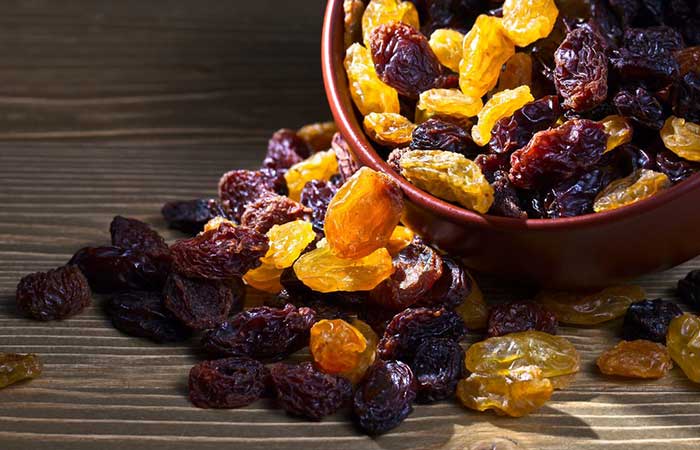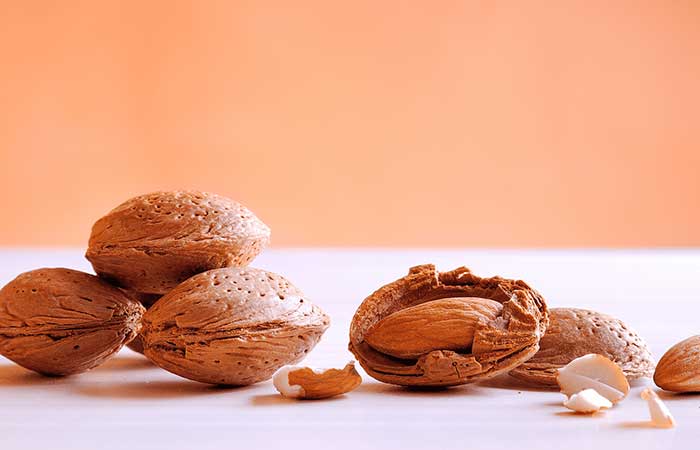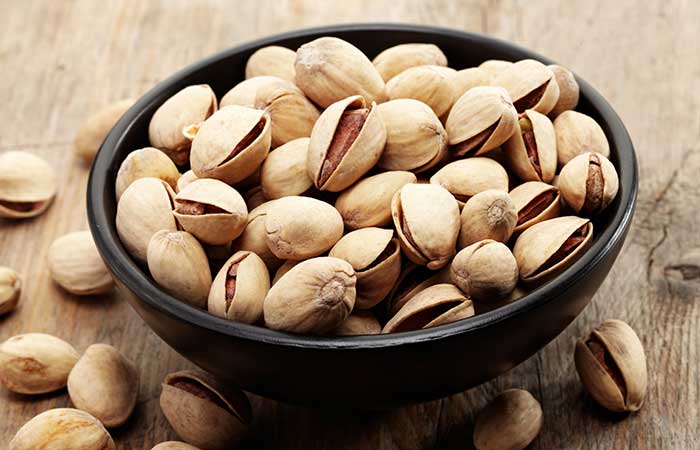Saffron
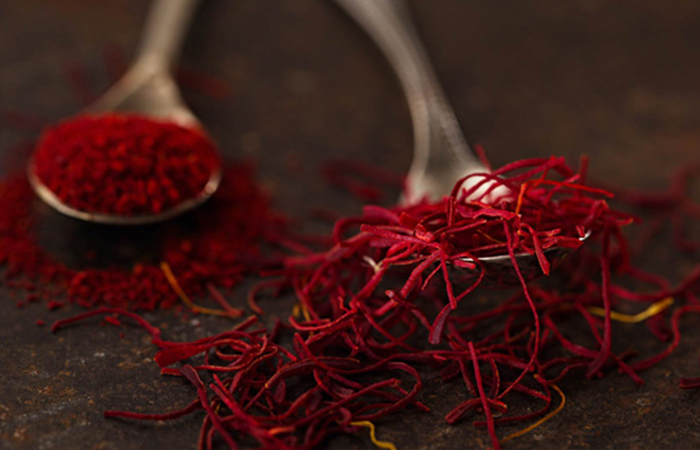
Saffron is a highly prized spice derived from the Crocus sativus flower. It is known for its distinctive flavor, aroma, and vibrant yellow-orange color. Saffron has been used for centuries in various cuisines, traditional medicines, and even religious rituals.
The spice is obtained by carefully harvesting the thread-like structures called stigmas from the saffron crocus flowers. Each flower produces only three stigmas, and they are hand-picked, which contributes to saffron's high cost.
Saffron adds a unique and complex flavor to dishes. It has a slightly floral and honey-like taste with hints of bitterness. Due to its potency, only a small amount is needed to infuse a dish with its characteristic flavor and color. Saffron is commonly used in rice dishes, such as paella and biryani, as well as in desserts, teas, and certain liquors.
Apart from its culinary uses, saffron has been associated with various health benefits. It contains several compounds with antioxidant and anti-inflammatory properties. Saffron has been studied for its potential effects on mood, memory, eye health, and more, but further research is needed to fully understand its therapeutic potential.
Overall, saffron is considered one of the most expensive and valuable spices in the world, cherished for its unique qualities and cultural significance.
Iranian Saffron
Iranian saffron is renowned as one of the highest quality saffron varieties in the world. Iran has a long history of saffron cultivation and is currently the largest producer and exporter of saffron globally. The country's favorable climate and geographic conditions provide an ideal environment for growing saffron.
Iranian saffron is predominantly produced in the northeastern regions of the country, particularly in Khorasan province. The saffron cultivated in Iran is primarily of the Crocus sativus variety and is known for its exceptional flavor, aroma, and color.
The distinct characteristics of Iranian saffron can be attributed to several factors, including the traditional cultivation techniques passed down through generations, the specific climate conditions, and the expertise of the farmers. The stigmas are carefully hand-picked, ensuring the delicate threads are not damaged, and then dried to preserve their quality.
The high-quality Iranian saffron threads are deep red with a strong aroma and a slightly sweet and floral flavor. They are prized for their potent coloring properties, which lend a rich golden hue to culinary creations.
Iranian saffron finds extensive use in various cuisines around the world. It is an essential ingredient in many Persian dishes, such as saffron rice, stews, and desserts. It is also used in international cuisines, including Indian, Mediterranean, and Spanish dishes.
The reputation of Iranian saffron is based on its superior quality and the expertise of Iranian saffron farmers. It continues to be highly sought after and valued in both domestic and international markets.
Saffron planting and harvesting
Saffron planting and harvesting involve several steps that require careful attention and manual labor. Here is a general overview of the process:
1. Soil Preparation: Before planting saffron, the soil needs to be prepared. It should be well-drained, loose, and fertile. The fields are plowed and cleared of any weeds or debris.
2. Corm Planting: Saffron is grown from corms, which are bulb-like structures. The corms are planted in shallow holes or trenches, typically in late spring or early summer. They are spaced apart to allow room for growth and development.
3. Growth and Maintenance: Saffron crocus plants require specific care during their growth period. They need sufficient sunlight and water but should not be overwatered to prevent rotting. Weeds should be removed regularly, and the soil should be kept loose to aid in the growth of new corms.
4. Flowering: Saffron crocus flowers bloom in the autumn, usually in October or November, depending on the region. Each flower produces three crimson-colored stigmas, which are the valuable saffron threads. The flowers are delicate and short-lived, usually lasting only a week.
5. Harvesting: Harvesting saffron is a labor-intensive process that requires careful hand-picking. The flowers must be harvested early in the morning when they are still closed to protect the delicate stigmas. The stigmas are carefully plucked from the flowers using tweezers or by hand. This step is time-sensitive, as the stigmas quickly lose their quality if not collected promptly.
6. Drying: After harvesting, the saffron stigmas need to be dried to preserve their flavor, aroma, and color. This is typically done by placing the stigmas in a cool, well-ventilated area away from direct sunlight. Traditional methods involve using flat baskets or trays, while modern techniques may use specialized drying equipment. The stigmas are left to dry for a period of time, usually a couple of weeks, until they become brittle.
7. Packaging and Storage: Once the saffron threads are fully dried, they are weighed, packaged, and stored in airtight containers to protect them from moisture and light. Proper storage conditions help maintain the quality of saffron over an extended period.
It's important to note that saffron cultivation requires expertise and knowledge of the specific growing conditions. Factors such as temperature, soil composition, and irrigation methods can influence the quality and yield of saffron.
Health benefites of saffron
Saffron has been used for centuries not only as a spice but also for its potential health benefits. While more research is needed to fully understand its effects, here are some potential health benefits associated with saffron:
1. Antioxidant Properties: Saffron contains compounds such as crocin, crocetin, and safranal, which possess antioxidant properties. Antioxidants help protect the body against oxidative stress and damage caused by free radicals.
2. Mood Enhancement: Saffron has been traditionally used as a mood-enhancing herb. Some studies suggest that saffron may help improve symptoms of mild to moderate depression and anxiety. It is believed to boost the production of certain neurotransmitters, such as serotonin, which are involved in regulating mood.
3. Cognitive Function: Preliminary studies have indicated that saffron may have cognitive benefits. It has been associated with improved memory and learning abilities. Saffron's antioxidant and anti-inflammatory properties might play a role in protecting brain cells and reducing age-related cognitive decline.
4. Eye Health: Saffron has been linked to potential benefits for eye health. It contains compounds that may help protect the retinal cells from damage caused by oxidative stress. Saffron supplementation has been investigated for its potential role in age-related macular degeneration (AMD) and retinal diseases.
5. Anti-Inflammatory Effects: Some studies suggest that saffron has anti-inflammatory properties. It may help reduce inflammation in the body, which is associated with various chronic diseases, including cardiovascular conditions and certain types of cancer.
6. Appetite Suppression: Saffron has been found to have appetite-suppressing properties. It may help reduce snacking and curb cravings, potentially aiding in weight management efforts.
It's important to note that the studies conducted on saffron's health benefits are limited, and more research is needed to confirm and understand its effects fully. Saffron should not be used as a substitute for medical treatment, and it is advisable to consult a healthcare professional before using saffron for any specific health condition or concern.
Types of saffron
There are various types of saffron available in the market, which can differ in terms of quality, origin, and grade. The classification of saffron is primarily based on the region or country of origin. Here are some of the commonly known types:
1. Iranian Saffron: Iranian saffron, as mentioned earlier, is highly regarded for its superior quality. It is known for its deep red threads, strong aroma, and robust flavor. Iran is the largest producer and exporter of saffron globally.
2. Spanish Saffron: Spain is another significant producer of saffron. Spanish saffron is highly valued and often considered among the finest varieties. It has a deep red color and imparts a strong flavor and aroma to dishes.
3. Kashmiri Saffron: Saffron produced in the Kashmir region of India is known as Kashmiri saffron. It is highly prized for its intense flavor, aroma, and vibrant red color. Kashmiri saffron is characterized by its long, thick threads.
4. Afghan Saffron: Saffron cultivated in Afghanistan has gained recognition in recent years for its quality. Afghan saffron is known for its strong aroma, deep red threads, and potent coloring properties.
5. Greek Saffron: Greece has a long history of saffron cultivation. Greek saffron, particularly from the region of Kozani, is renowned for its high quality. It has a vibrant red color and imparts a distinct flavor and aroma.
6. Moroccan Saffron: Saffron produced in Morocco is esteemed for its unique characteristics. Moroccan saffron threads are generally darker and have a slightly different flavor profile compared to other varieties.
7. Italian Saffron: Italy also produces saffron, primarily in the Abruzzo and Sardinia regions. Italian saffron is known for its strong fragrance, rich coloring, and distinct flavor.
It's worth noting that the quality and characteristics of saffron can vary even within the same region due to factors such as growing conditions, harvesting methods, and post-harvest processing. Therefore, it's important to consider factors beyond the type or origin of saffron when assessing its quality.
Special types of Iranian saffron
Iranian saffron is known for its exceptional quality and is categorized into different types based on the characteristics of the saffron threads. The main types of Iranian saffron include:
1. Sargol: Sargol saffron is considered the highest grade and most sought-after type of Iranian saffron. It consists of only the deep red, thread-like stigmas, with no yellow or white parts. Sargol saffron has a strong aroma, robust flavor, and intense coloring properties.
2. Negin: Negin saffron is another premium grade saffron with long, all-red threads. It is slightly higher in quality compared to Sargol. Negin threads are usually longer and thicker, with a powerful aroma and strong coloring ability.
3. Pushal: Pushal saffron contains the red stigmas along with a small portion of the yellow or white style. This type of saffron is recognizable by the presence of the orange-red threads and the slight yellow portion at the end. Pushal saffron has a balanced flavor and aroma and is often preferred for its visual appeal.
4. Dasteh or Bunch: Dasteh saffron consists of the whole saffron strands, including the red stigmas, yellow style, and even the pale yellow or white part of the flower. It is less refined compared to other types but is still of good quality. Dasteh saffron is commonly used for infusions, tea, or grinding purposes.
These saffron types represent the different levels of refinement and purity, with Sargol and Negin being the most prized for their all-red threads. However, it's important to note that the distinction between these types can sometimes be subjective, and there may be variations in grading practices among different saffron suppliers.
When purchasing Iranian saffron, it is advisable to look for reputable brands or sources that offer transparent information about the saffron's origin, grade, and quality to ensure you are getting genuine and high-quality saffron.
The price of saffron can vary widely depending on factors such as the type of saffron, quality, origin, market demand, and current supply. Saffron is generally considered one of the most expensive spices in the world due to its labor-intensive cultivation and the limited availability of the saffron threads. Here are some approximate price ranges for saffron:
1. Iranian Saffron: Iranian saffron is known for its high quality and is typically priced between $500 to $5,000 per pound (or $1,100 to $11,000 per kilogram) depending on the grade and type. The premium grades, such as Sargol and Negin, are usually more expensive.
2. Spanish Saffron: Spanish saffron is also highly regarded, and its price can range from $1,200 to $2,500 per pound (or $2,600 to $5,500 per kilogram) for top-quality threads.
3. Kashmiri Saffron: Kashmiri saffron, known for its intense flavor and aroma, tends to be priced between $1,200 to $2,000 per pound (or $2,600 to $4,400 per kilogram) for high-quality saffron.
Saffron price
It's important to keep in mind that these price ranges are approximate and can vary depending on various factors such as market conditions, supply chain, packaging, and location of purchase. Additionally, smaller quantities of saffron are often available for purchase at a higher price per gram or ounce.
Given the high cost of saffron, it is important to be cautious of significantly lower prices, as they may indicate lower quality or adulteration with other substances. It is advisable to purchase saffron from reputable sources to ensure authenticity and quality.
The saffron exporters
the largest exporters of saffron in the world include the following countries:
1. Iran: Iran is the largest producer and exporter of saffron globally. It has a long history of saffron cultivation and accounts for a significant portion of the world's saffron production. Iranian saffron is renowned for its high quality and is exported to various countries.
2. Spain: Spain is another major exporter of saffron. It has a strong saffron industry, particularly in the La Mancha region. Spanish saffron is highly regarded for its quality, and it is exported to numerous countries around the world.
3. India: India is one of the leading producers and exporters of saffron. The Kashmir region in India is known for its saffron cultivation, and Indian saffron is recognized for its unique flavor and aroma. Indian saffron is exported to several countries, including the Middle East, Europe, and the United States.
4. Greece: Greece has a long history of saffron cultivation, particularly in the Kozani region. Greek saffron, known as "Krokos Kozanis," is highly regarded and has protected geographical indication status in the European Union. Greece exports saffron to various countries worldwide.
5. Afghanistan: Afghanistan has emerged as a significant exporter of saffron in recent years. Afghan saffron has gained recognition for its quality and unique characteristics. The country's saffron industry has been growing, and Afghan saffron is exported to different parts of the world.
It's important to note that the saffron market can be dynamic, and the rankings of countries as top exporters may vary over time. It's always advisable to refer to the latest reports and market data for the most up-to-date information on saffron exports.
The largest importers of saffron
The largest importers of saffron in the world vary depending on the specific year and market conditions. However, based on historical data and market trends, some of the largest importers of saffron include:
1. United States: The United States is a significant importer of saffron. The demand for saffron in the U.S. has been increasing, driven by its use in various cuisines and its growing recognition for its potential health benefits.
2. United Arab Emirates (UAE): The UAE, particularly Dubai, serves as a major hub for the re-export of saffron to other countries. It is also a significant consumer of saffron due to its diverse culinary culture and the presence of international cuisines.
3. Spain: While Spain is a major exporter of saffron, it also imports saffron to meet domestic demand. Spain has a strong culinary tradition and uses saffron extensively in its cuisine, which drives both import and export activities.
4. Saudi Arabia: Saudi Arabia is a significant importer of saffron due to its use in traditional Middle Eastern and Arab cuisines. Saffron is a highly valued spice in the region and is used in dishes such as biryanis, rice-based dishes, and desserts.
5. Germany: Germany is a notable importer of saffron. The country has a diverse culinary scene and a demand for high-quality saffron for various dishes and preparations.
6. France: France has a rich culinary heritage, and saffron is an important ingredient in French cuisine. The country imports saffron to meet the demand for both domestic consumption and the use in its renowned gastronomy.
7. United Kingdom: The United Kingdom is a significant importer of saffron, driven by the demand for saffron in its diverse culinary landscape. The use of saffron in traditional British dishes, as well as in international cuisines, contributes to its import market.
It's important to note that the import market for saffron can be dynamic, and the rankings of countries may vary depending on various factors such as market trends, cultural preferences, and trade dynamics.
The largest producer and exporter of saffron
Iran is the largest producer and exporter of saffron in the world. Iranian saffron, known for its high quality and distinct characteristics, is in high demand globally. Iran's saffron export industry plays a vital role in its economy. Here are some key points regarding the export of Iranian saffron:
1. Global Market Share: Iran accounts for a significant portion of the global saffron market. Estimates vary, but it is reported that Iran produces and exports over 90% of the world's saffron.
2. Export Volume: Iran's saffron exports have been steadily increasing in recent years. According to the Iranian Ministry of Agriculture, Iran exported approximately 430 metric tons of saffron in the Iranian calendar year 1399 (2020-2021).
3. Major Export Destinations: Iranian saffron is exported to numerous countries worldwide. The key export destinations for Iranian saffron include the United Arab Emirates, Spain, Afghanistan, Germany, India, and various other countries in Europe, the Middle East, and Asia.
4. Grades and Types: Iranian saffron is available in different grades and types, including Sargol, Negin, Pushal, and Dasteh. These types cater to different market preferences and applications.
5. Quality Control: Iran has implemented strict quality control measures to ensure the authenticity and quality of its saffron exports. The Iranian government has established regulatory bodies and quality control organizations to monitor and certify saffron products before export.
6. Packaging and Branding: Iranian saffron is often packaged and labeled with its country of origin to highlight its authenticity and quality. Iranian saffron brands have gained recognition globally for their reputation in delivering high-quality saffron products.
7. Economic Impact: The saffron industry has a significant economic impact on Iran. Saffron cultivation and export provide income and employment opportunities for many Iranian farmers and workers. It contributes to rural development and foreign exchange earnings for the country.
It's important to note that the saffron export market can be influenced by various factors, including market demand, competition, geopolitical dynamics, and trade regulations. The export figures and trends may vary from year to year.
Similar Articles
Bell peppers belong to the nightshade family (Solanaceae) and are cultivated primarily for their mild, thick-fleshed fruits. These peppers are commonly used both in salads and various cooked dishes
Raisins have a long and storied history, dating back thousands of years to ancient civilizations like Persia and Egypt. They were not only consumed as a food source but also held cultural and religious
Almonds are indeed a popular and versatile tree nut used in various culinary applications around the world. Here are some key points about almonds:Botanical Description: The almond tree, scientifically
Pistachios are indeed members of the cashew family (Anacardiaceae) and are primarily grown in dry, warm or temperate climates. The pistachio tree is believed to have originated in Iran and has been

